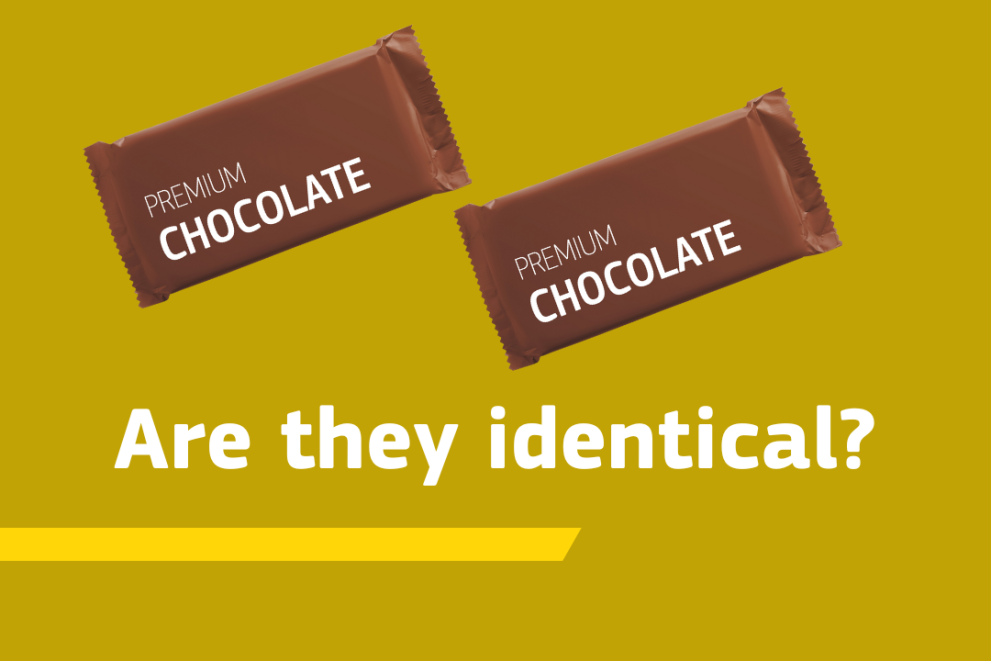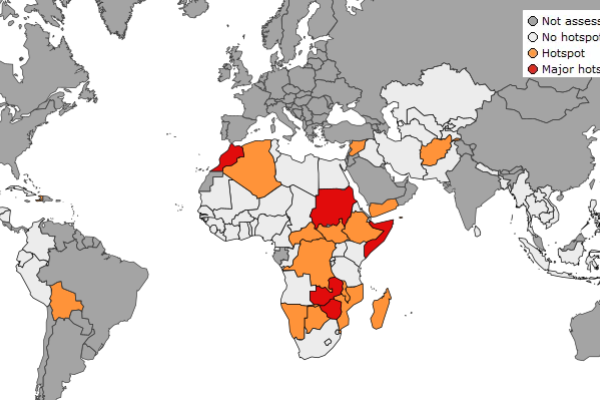
Have you ever wondered why your favourite chocolate brand contains a different amount of nuts than the one your friend bought in a neighbouring country? Do you know if the composition of your favourite detergent remains consistent across the EU?
The JRC publishes today the results of three studies, which also include two surveys, on foods, and on household and care products marketed as identical while having different characteristics or ingredients depending on where it is being sold. Such marketing practices are unfair under EU law unless the product differences are justified by legitimate and objective factors, such as national law, availability or seasonality of raw materials or voluntary strategies to improve access to healthy and nutritious food.
The first study, an EU-wide comparison of the characteristics and presentation of branded food products (2021), replicated the testing campaign carried out by the JRC in 2018/2019 in order to provide insight on the eventual trends on the occurrence of ‘dual quality’ of branded food products in the EU.
The results of the 2018/2019 testing performed in 19 Member States showed that 9% of the compared products differed in composition, although the packaging was identical. A further 22% of products with a different composition had a similar packaging. Thus, in total 31% of the tested products had same or similar packaging but a different composition. The study did not show any consistent geographical pattern.
The testing campaign carried out in 2021 covered 26 Member States. It found that, in the same 19 countries covered by the first 2018/2019 campaign, a total of 24% of products with identical or similar packaging had a different composition. This constitutes a 7 percentage points decrease:
- 5.6 % of the evaluated food products had differences in composition but an identical packaging appearance;
- 18.5 % of the products differed in composition and indicated to a certain extent those differences by variations in the graphical design on the packaging.
As in 2018/2019, no geographical pattern of such occurrences was identified in the 2021 campaign.
The testing campaign was accompanied by a survey, in which a majority of the surveyed companies said to have taken or to be planning to take action, including by changing product presentation, harmonising recipes, implementing other measures or combining these actions.
Dual quality of household and personal care products
The JRC collaborated with national competent authorities to assess for the very first time the differences in the quality of 58 branded household and 79 personal care products from 20 EU countries sold on the single market. The study, Assessing alleged differences in the quality of household and personal care products sold in the Single Market – Results of an EU wide comparison [link], showed that:
- 8% of products had an identical packaging but differed in declared ingredients
- 25% of products with differences in the listed ingredients showed also certain variations in their packaging appearance
- no clear trend of product differentiation was observed across geographical regions of participating Member States
A third JRC study, Empirical testing of consumers perceptions of differences in package and product versions of seemingly identical branded food products, examined the impact of variations in the packaging design of seemingly identical branded food products on consumer perception and decision-making.
Through an online survey conducted in 10 EU countries, the findings revealed that:
- the higher the number of elements differing in the packaging design, the higher the likelihood for consumers to detect that packages were different;
- however, consumers needed more packaging elements to be different to realise that that the products inside those packages are different, too;
- in addition, packaging elements influenced purchase decisions, with consumers being willing to pay more for the products in packages signalling features that align with their purchase motives.
Policy context
The Commission has addressed the issue of dual quality, following reports from several Member States showing that that the composition of certain products, such as soft drinks, coffee, or fish fingers, was different in their markets compared to products sold under the same brand and with the same or very similar packaging in other EU countries.
First, the Commission proposed strengthening the Union’s consumer protection rules in this area. Following the Commission’s proposal, specific amendments were adopted in 2019 to the Unfair Commercial Practices Directive as part of the Modernisation and Better Enforcement Directive.
The amendments that entered into application in 2022 clarified that marketing a good in one Member State as being identical to the same good in other Member States whilst their composition and characteristics are significantly different, is prohibited when it could lead consumers to purchasing decisions that they would not have taken if they knew about the difference.
In December 2021, the Commission updated the guidance on the application of the amended Unfair Commercial Practices Directive which includes a chapter dedicated to dual quality. In 2024, the Commission will report on the application of the Modernisation and Better Enforcement Directive, including the rules concerning the dual quality.
Second, the Commission’s JRC adopted in 2018 a harmonised methodology for assessing dual quality cases. It has also performed a number of studies to investigate the market situation and the economic aspects of dual quality.
Related links
EU-wide comparison of the characteristics and presentation of branded food products (2021)
Unfair Commercial Practices Directive
Guidance on the application of the amended Unfair Commercial Practices Directive
Details
- Publication date
- 24 July 2023
- Author
- Joint Research Centre
- JRC portfolios




